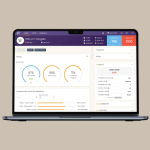The Rapid Growth of Digital Lending in MENA: What You Need to Know

The digital lending industry in the Middle East and North Africa (MENA) is on track to reach a net valuation of $1.48 billion by 2027, growing at a compound annual growth rate (CAGR) of 17.4%. Several factors are driving this impressive growth, particularly increased government investment and the expanding internet penetration, which are helping bridge the gap between lenders and underserved communities.
As the digital lending sector continues to evolve at a rapid pace, the pressing question remains: what are the key factors that businesses need to focus on to secure their place in this fast-growing industry?
Addressing the Current Market Gap
For years, the digital lending market in MENA has been ripe for disruption. However, challenges such as limited digital literacy and slow technological adoption have hindered its growth. Peer-to-peer (P2P) lending, for example, didn’t make its debut in the region until 2013, when platforms like Liwwa and Beehive sought to address a $300 billion consumer credit gap. While digital lending options like BNPL (Buy Now Pay Later) and P2P lending have gained widespread traction in markets like the US, UK, and China, consumers in MENA are just beginning to explore these innovative financial tools.
Moreover, small and medium-sized enterprises (SMEs) in the region face similar challenges in accessing affordable credit. Despite SMEs being the backbone of most economies, contributing to 90% of job creation, they remain underserved by traditional financial institutions. The International Finance Corporation (IFC) has estimated a $195 billion credit gap for SMEs in MENA, with nearly a third of these businesses facing significant barriers due to the lack of affordable credit options.
Why Is the Market Booming Now?
The digital lending and fintech sectors have seen a resurgence in recent years, driven by new investments and a renewed interest in growth. In fact, fintech companies received over 30% of the total funding in MENA in 2021, according to Redseer’s report. The surge in investment is especially significant in digital lending, where fintech startups are attracting considerable attention.
What has fueled this revival? There are three key factors contributing to the digital lending boom:
- Increased Government Investment in Infrastructure
Governments in MENA are ramping up efforts to develop the digital infrastructure necessary for financial services to thrive. This includes improvements in technology and regulatory frameworks that enable digital lending platforms to operate more efficiently. - Growth in Digital Literacy Among Consumers
With a younger, tech-savvy population in MENA, more people are becoming comfortable using digital tools, including for financial transactions. This is helping drive demand for digital lending services. - Development of Digital Databases and Processes
The establishment of digital tools such as eKYC (electronic Know Your Customer), digital signatures, and automated credit scoring systems is enabling faster and more reliable digital lending processes. These advancements are essential for scaling digital lending services across the region.
These factors have created a perfect storm for digital lending to flourish in MENA, with more fintech companies entering the market and offering innovative solutions.
Popular Digital Lending Instruments in MENA
MENA presents a unique opportunity for digital lending companies due to its large, digitally literate population. Consumers in the region are eager to embrace new financial instruments, and fintechs are capitalizing on this demand by offering innovative lending solutions. While specific data on the popularity of certain lending instruments is scarce, there are clear trends emerging in different sub-sectors.
In consumer lending, BNPL and P2P lending are rapidly gaining traction. Platforms in the region are addressing the vast credit gap, with some P2P lending platforms able to fund loans ranging from $80,000 to $500,000 in under five minutes. Similarly, commercial lenders like LNNDO are simplifying SME loan processes, offering working capital loans up to $100,000 in less than a week with no collateral required.
These developments highlight the fast-paced growth of both consumer and business lending ecosystems in MENA, signaling a significant shift in how financial services are delivered to underserved markets.
Looking Ahead
According to Redseer’s “Voice of Consumer” survey, the current adoption rate of digital lending services in MENA is only 7%. However, the survey also found that over 38% of consumers intend to use digital lending services in the future. This indicates a strong potential for growth as the industry matures. With the current trajectory of digital adoption and market growth, it’s highly likely that digital lending will become a mainstream financial service in MENA in the near future.


 English
English 












































































































































































































































































































































































